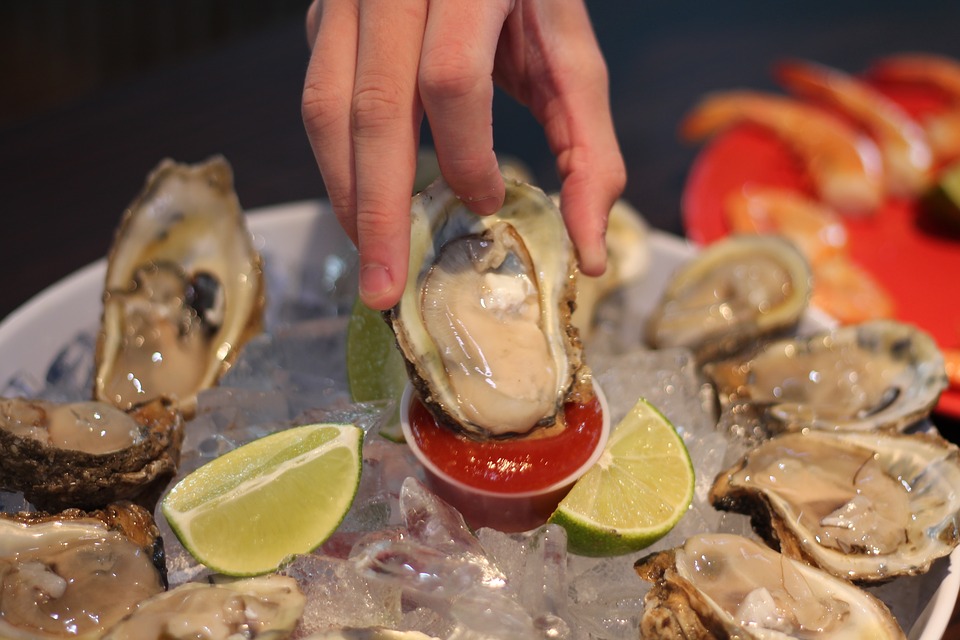This article was originally published on The Conversation and got picked up by the National Post and The Weather Network.

Many people look forward to raw oysters, and raw oyster bars are popular at some trendy restaurants. However, they (along with other under-cooked seafood) can put you at risk for food-borne illnesses.
Recently, many people became ill in British Columbia, Alberta and Ontario after eating raw oysters harvested from B.C. farms.
Although the actual causes of the contamination are still unknown, human sewage in the marine environment is the likely culprit in this outbreak.
People in the United States have also become sick from eating these Canadian raw oysters.
Norovirus is actually the most common cause of food-borne illness caused by the consumption of bivalve shellfish contaminated with human fecal matter. In fact, some recent research done in the United Kingdom found that almost 70 per cent of the raw oysters sold in the U.K. contain norovirus, although it is uncertain if all of the virus is actually infectious.
Oyster-associated norovirus outbreaks commonly result from contamination at the source in the growing waters. Oyster beds themselves can become contaminated due to land-based sewage outflow or sewage disposal from oyster harvesters.
Can you tell if a raw oyster is bad?
No, an oyster that contains harmful bacteria or viruses does not look, smell or even taste different from any other oyster.

Besides norovirus, there are a number of other bacteria and viruses that we need to be concerned with in raw oysters.
The most important bacteria are two in the genus Vibrio. One is called Vibrio parahaemolyticus and the other Vibrio vulnificus. The latter bacterium can cause more severe illness, but is more often a problem in the U.S. than in Canada.
Salmonella has also been found in raw oysters. And, when it comes to viruses, hepatitis A can be found in raw oysters and cause illness, although norovirus is the one that has caused most of the problems of late.
How do raw oysters become contaminated?
Human sewage in the marine environment is believed to be the most probable cause of oyster contamination with norovirus.
But Vibrio bacteria are believed to be a natural part of the marine environment where oysters live. It is only when water temperatures rise that these bacteria can become a problem.
In fact, global warming is thought by some to be responsible for some outbreaks linked to Vibrio species.
Because oysters feed by filtering water, both bacteria and viruses can actually concentrate themselves in the tissues of the oysters before they are eaten by consumers.
Who is most at risk of infection?
Acute gastrointestinal illnesses such as norovirus and vibriosis are common in North America, and can affect all age groups.
However, pregnant women, people with compromised immune systems, young children and the elderly are at risk for developing more serious complications.
For a certain type of Vibrio bacteria, which is more common in the U.S., people with underlying health conditions, such as liver disease, are at a higher risk of more serious complications or even death.
How to purchase oysters safely
First, shop from reliable sources and choose fresh oysters with intact shells and without abnormal odour. When the shell is tapped, it should close tightly. Throw away any oysters with shells already opened.
Check the expiry date of prepackaged shucked oysters. Ensure they are stored properly at 4 C or below for chilled products, or at -18 C or below for frozen products.
It is best to place raw, store-bought oysters into a cold thermos bag when transporting them home. This will minimize the time that the oysters are exposed to room temperature, which favours the growth of bacterial pathogens such as Vibrio.
Chilled oysters should be consumed within one to two days. Oysters in the shell should be placed in containers with a cover to prevent cross-contamination in the refrigerator.
How to cook oysters at home
To protect yourself, do not eat oysters raw or under-cooked. The safest way is to cook your oysters until they reach an internal temperature of 90 C.
In the shell: After the shells open, you should boil the live oysters for another three to five minutes. Also, do not cook too many oysters in the same pot because the ones in the middle may not get fully cooked. Finally, discard any oysters that do not open during cooking.
In a steamer: Add oysters to water that is already steaming and cook the live oysters for four to nine minutes.
Shucked products should be boiled for three minutes, fried at 375 F for at least three minutes or baked at 232 C (450 F) for 10 minutes.
Be sure to wash your hands, utensils and surfaces well with hot water and soap after you have handled raw oysters. You do not want to cross-contaminate other ready-to-eat foods in your kitchen.
A few oyster myths
1. You only get sick from eating oysters during the warmer months of the year.
While it is true that most vibriosis cases occur during the warmer months of the year, when the water temperatures are higher and there is a better chance of the Vibrio bacteria growing more rapidly, cases have been reported all year round.
For norovirus, a number of studies have found that you can actually find higher levels in commercially harvested shellfish during the winter. Some studies have shown that there is a cold weather peak in relation to the number of norovirus gastroenteritis cases that occur.
2. If you avoid eating raw oysters from polluted waters, you will be safe.
False. Vibrio bacteria are not a result of pollution as they are natural inhabitants of the marine environment. So, although oysters should always be obtained from reputable sources, eating oysters from “clean” waters or in reputable restaurants with a high turnover does not guarantee that you will not get sick.
3. Eating raw oysters with hot sauce and lemon juice will kill the bacteria and viruses that can cause food-borne illness.
No, this is false. Hot sauce and/or lemon juice will not significantly affect any of the food-borne pathogens.
4. Eating raw oysters while drinking alcohol will kill the bacteria and viruses that can cause food-borne illness.
![]() Again, this is false.
Again, this is false.